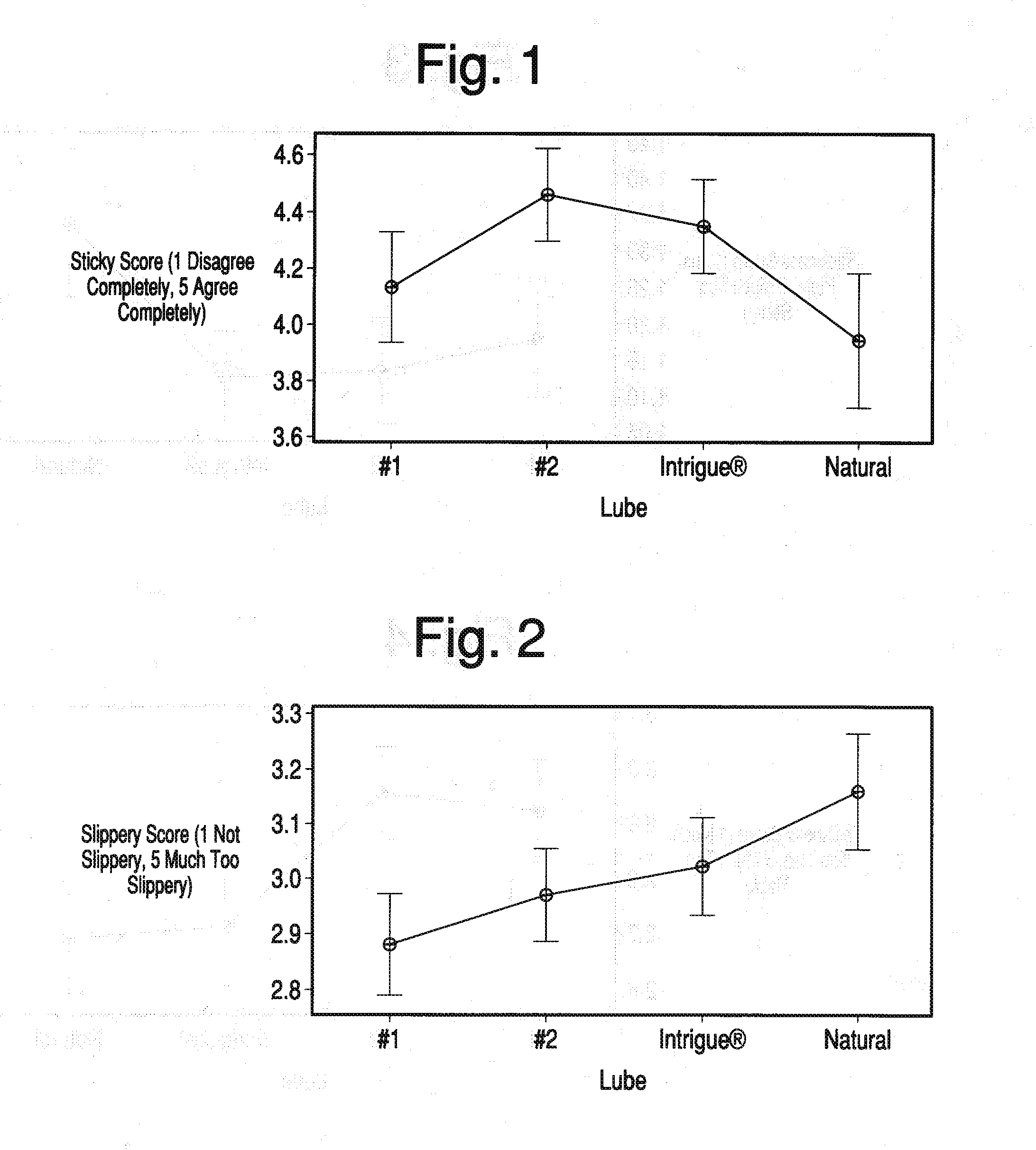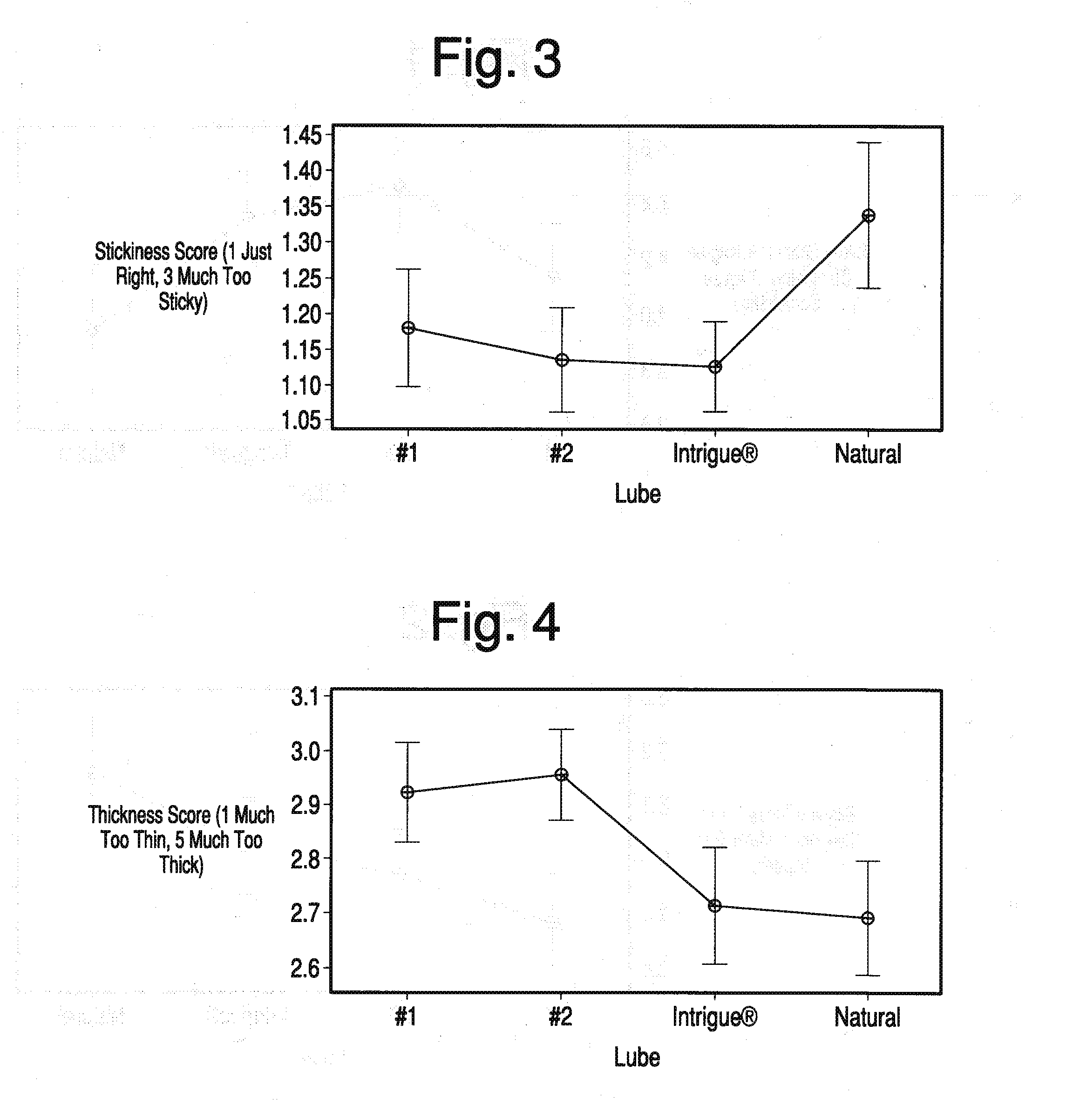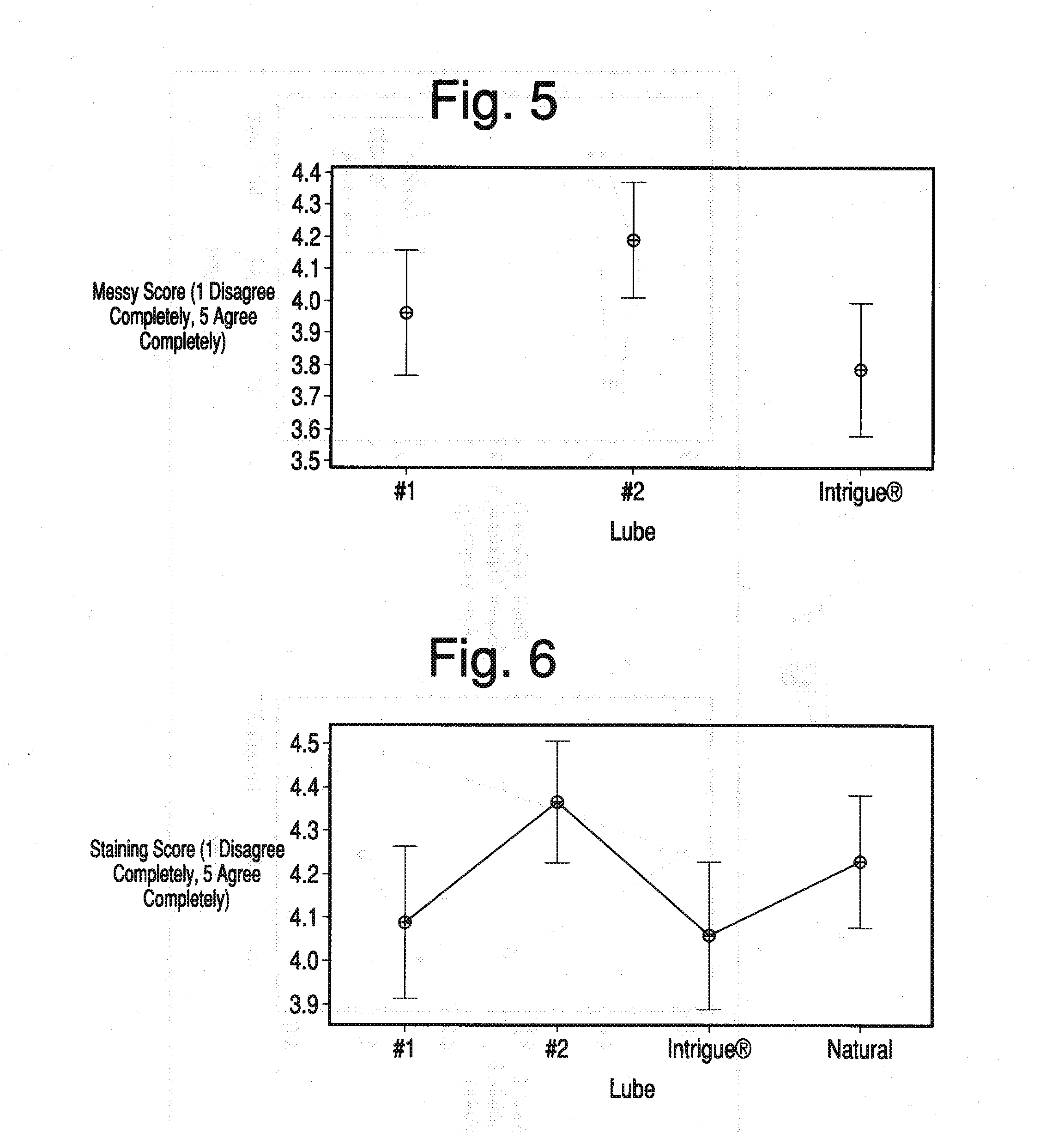Water-based personal lubricants with a silicone component
a technology of silicone and lubricant, applied in the direction of drug composition, biocide, aerosol delivery, etc., can solve the problems of silicone-based lubricants, difficult cleaning, and feel greasy
- Summary
- Abstract
- Description
- Claims
- Application Information
AI Technical Summary
Benefits of technology
Problems solved by technology
Method used
Image
Examples
example 1
Home Use Test
[0035]The purpose of this test was to evaluate and compare the sensory characteristics of four personal lubricant products.
Materials & Method
[0036]Three monadic home-use studies were conducted under identical conditions. Each study contained five to six cells of up to 150 subjects per cell for a total of 17 lubricants tested. Each cell was assigned a different lubricant to use at home, and then subjects were all given the same questionnaire to fill out. Subjects were blinded as to which lubricant they received.
[0037]Some of the lubricants included in the study were currently marketed products, while others were test formulas that comprised silicone-glycol-water hybrid-based formulas.
[0038]For the purposes of this analysis, two silicone-glycol-water hybrid lubricants (Test Lubricant #1 and Test Lubricant #2) were chosen to compare to a currently marketed silicone lubricant (K-Y® Intrigue®) and a currently marketed glycol lubricant (K-Y® Liquid ‘Natural Feeling’). The dat...
example 2
[0072]In this study, members of an expert test panel utilized standard descriptive analysis testing methods (Sensory Evaluation Techniques, 3rd Edition 1999) to provide sensory data for product feel and appearance. Products were presented in a sequential monadic format, and all panelists saw all products in sequential monadic design. No more than two replicated samples were evaluated in a single session.
[0073]Each visual evaluation was performed using approximately 1 teaspoon of product. Each product was dispensed onto the forearm of a single subject for evaluation among the panelists. Panelists evaluated the sample for integrity of shape. Appearance evaluation took place using fluorescent and incandescent light.
[0074]For tactile evaluations, panelists washed their arms with low residue soap prior to evaluation and did not apply lotions. Each tactile evaluation was performed using approximately ½ teaspoon of product. Each product was dispensed onto the inner forearm near the crook. ...
example 3
[0078]The optimized formulas as set forth in Table 3 were graphed as in FIG. 9, and plotted along with compositions 1-9 from U.S. 2010 / 0012132 as shown in FIG. 10. In FIG. 10, the propylene glycol ranges from a high of 57.5% of the formula to a low of 43.0%, so as to accommodate the formulations of the mentioned U.S. publication. FIG. 10 also shows a water content from a low of 29.5% to a high of 44.0%. The propylene glycol content of the formulations of the comparable U.S. publication was determined by adding all components, other than the silicone and water. Thus, the comparable formulations may include other glycols and / or preservative agents. It can be seen that the comparable formulations are all outside the space of the optimized formulations of the present invention.
PUM
| Property | Measurement | Unit |
|---|---|---|
| water content | aaaaa | aaaaa |
| water content | aaaaa | aaaaa |
| hydrophilic | aaaaa | aaaaa |
Abstract
Description
Claims
Application Information
 Login to View More
Login to View More - R&D
- Intellectual Property
- Life Sciences
- Materials
- Tech Scout
- Unparalleled Data Quality
- Higher Quality Content
- 60% Fewer Hallucinations
Browse by: Latest US Patents, China's latest patents, Technical Efficacy Thesaurus, Application Domain, Technology Topic, Popular Technical Reports.
© 2025 PatSnap. All rights reserved.Legal|Privacy policy|Modern Slavery Act Transparency Statement|Sitemap|About US| Contact US: help@patsnap.com



